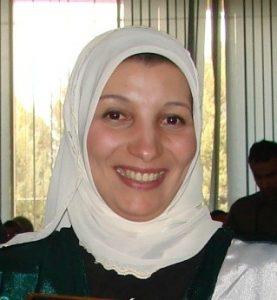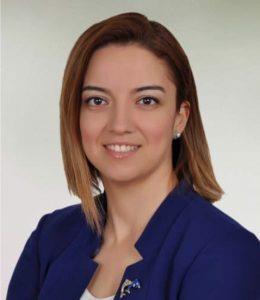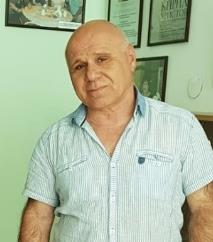Invited Speakers
Prof. Dr. Sushil SHARMA (Ball State University, USA)

Dr. Sushil Sharma is currently an associate dean and a professor of computer information systems (CIS) in the Miller College of Business at Ball State University. Dr. Sharma has the unique distinction of earning two doctoral degrees. He has over 20 years of administrative leadership experience and more than 25 years of experience in higher education. Dr. Sharma served as the Chair for the Department of Information Systems and Operations Management (2008–2012) and Executive Director of the MBA and other Certificate Programs (2011-2013). A Leadership Fellow in Higher Education through the Management Development Program at Harvard University, he has co-authored/edited/co-edited twelve (12) books and published over ninety (90) refereed research papers in the most reputed national and international MIS journals. In addition, he has published forty-five (45) refereed chapters in various books and has presented and published over 135 papers in various national and international conferences. Dr. Sharma’s research has appeared in several highly ranked journals in the MIS field, including Decision Support Systems, Communications of the Association for Information Systems, European Journal of Information Systems, Information Systems Frontiers, Journal of Information Privacy & Security (JIPS), Electronic Commerce Research Journal, and Information Management and Computer Security.
He has authored two cases which are published by the Ivy School of Business, University of Western Ontario and are available through Harvard Business Publishing. Prior to joining the faculty at Ball State, he held the associate professor position at the Indian Institute of Management, Lucknow (India), and a visiting research associate professor at the Department of Management Science at the University of Waterloo (Canada). Dr. Sharma held several academic administration positions including the chair of the two different departments, Chair of Placement, Chair of Student Affairs and Alumni, and head of the Computer Center at the Indian Institute of Management, Lucknow (India).
His primary research interests are in computer information systems security, e-Learning, e-Government, computer-mediated communications, human computer interaction (HCI) and community and social informatics. He has taught several graduate and undergraduate courses on a variety of subjects including database management, ERP systems (SAP), electronic commerce, computer and network security, management information systems, systems analysis and design, distributed data processing systems, computer networking, knowledge management and other information systems related subjects. Dr. Sharma has earned recognition for his teaching, research and service and has been a recipient of several outstanding awards at both the university and college levels. Dr. Sharma was awarded the Outstanding Administrator Award for the academic year 2015-16, given in recognition of demonstrated excellence in administrative service to the university. Dr. Sharma received the Outstanding Research Award for the year 2006-2007, given to an individual faculty member in recognition of contributions in the area of research. Dr. Sharma received the Outstanding Faculty Award for the year 2008-2009, given in recognition of demonstrated composite excellence in teaching, scholarly or creative productivity, and service by a faculty member who has an academic record at Ball State of more than five years. At the college level, Dr. Sharma has been a recipient of the Miller College of Business Extraordinary Year Award, given by the dean of the college in recognition of excellence in teaching, research, and service for three consecutive years (2003, 2004, & 2005). He also received the Outstanding Researcher of the Year Award in 2008.
Dr. Sharma has been the recipient of several research grants and has also won numerous professional honors. Dr. Sharma received a Citation of Excellence as the author of one of the top fifty Management articles of 2002 for the paper “Securing Information Infrastructure from Information Warfare”, Logistics Information Management, Vol. 15, No. 5/6, 2002. He also received the Instructional Innovation Award from the Southwest Decision Sciences Institute in 2003 and the Best Paper Award by the Midwest Association of Information Systems in 2012. His work on ‘Cyber Slacking’ has been widely covered by several media and news channels in the United States and he has often been interviewed for it. He has been a featured keynote speaker for hundreds of professional forums, executive development seminars, and academic conferences worldwide on a wide variety of topics of computer information systems and management such as e-Learning, e-Government, computer and network security, ERP implementations, community and social informatics, human-computer interaction (HCI) and knowledge management. He has been a member and chair of dissertation committees for several doctoral students. Sharma has also served as a consultant and advisor to numerous companies and organizations, including World Bank funded projects.
Since 2007, Dr. Sharma has served as the editor-in-chief/co-editor-in-chief of the International Journal of E-Adoption. He has been a guest editor, associate editor, reviewer and member of the editorial boards for several national and international journals in the area of MIS.
Dr. Sharma has traveled worldwide and lectured in several business schools around the globe in Europe, Australia, New Zealand, Asia, and North America.
Title of Speech: Changing Landscape of Learning Technologies – Virtual Reality, Augmented Reality, Mixed Reality and Beyond
Worldwide, most educators still prefer using the traditional face-to-face method to deliver their lectures in physical classrooms. Over the last two decades, the face-to-face method has been augmented with e-learning, using the internet and virtual environment technologies in virtual classrooms. New learning technologies, such as virtual reality (VR), augmented reality (AR), and mixed reality (MR), will further augment the higher education landscape with the use of virtual classrooms. These technologies are moving content and collaboration into a visual, spatial, and immersive three-dimensional (3D) environment. These technologies are combining Artificial Intelligence tools to create exciting opportunities to revolutionize learning.VR creates a wholly simulated reality; to create a more realistic and immersive experience (e.g. VR headgear or dedicated glasses and 3D programming). On the other hand, augmented reality (AR) superposes 3D objects, media contents or text information onto real-world images, for learners’ interaction and immersion. The combined form of AR and VR creates a MR in which real world with virtual components creates a real-time mixed reality. Using AR and VR tools and headsets, students will be able to experience virtual field trips of historical places, factory and manufacturing environments, as well as conduct experiments, and use gamification elements to create a more engaging learning experience.These technologies are going to revolutionize the learning landscape and take it to a new learning horizon. Researchers are predicting future learning technologies could take us to neuro-reality, in which the real world and the virtual one would be undetectable and technologies may interface directly with the human brain. What are these emerging learning technologies and the next realm of learning using virtual and augmented reality? How will these technologies change the pedagogy and design of curriculum? Will it change the skill sets of teachers and learners? How will we assess the intended outcomes of learning? Addressing how such technologies will change the design and pedagogy of curriculum is the next challenge for educators. This presentation will address these questions.

Title of Speech: A more integrated perspective of the knowledge space and cognitive learning for a professional expertise in an evolving society
Times are changing, the world is changing because the generations are changing, and the university is the institution that is the most affected by changes in society as well as knowledge.
Indeed, in the era of the knowledge economy, two new paradigms emerge on the horizon of university courses: employability (adapting and selling to the job market) and entrepreneurship (creating one’s own company creating one’s own employment). These two paradigms force us to consider learning in a more integrated and innovative way.
Innovation in learning is inevitably driven by innovation in teaching since new learning methods call for new teaching methods (deciding where and when to learn, choosing how and what to learn, weaving one’s network learning and teaching).
Moreover, this university is faced with the dilemma of the teacher who masters the knowledge, facing a student who masters the new tools. In terms of quality of teaching, a selection is already being made on the basis of the use or not of new technologies in teaching.
The new attitudes generated by the change in the construction of knowledge, and more precisely in cognition, are turned towards know-how and know how to be, summoned to professional profiles.
This intervention aims to evaluate the experience of a vocational training program implemented at the University of Constantine3, that of the Management of Architecture and Town Planning Projects, in terms of innovative learning methods and their relationship to the teaching of the project by the project with regard to the targeted professional competency and know-how.
KEY WORDS: Cognitive learning, innovative learning, Know how, know how to be, professional expertise

After completing undergraduate studies at Yıldız Technical University in Physics Department, she has done her graduate and doctorate on the differentiation of stem cells in Biophysics Department of Istanbul University Istanbul Faculty of Medicine. She has received training in post-doctoral healthcare administration, applied entrepreneurship, strategic technology and product management mentorship and innovation leadership. Since 2004, Dr.Şener has been working at Istanbul University. She is currently a faculty member of Istanbul Faculty of Medicine Biophysics Department. In 2015, the Istanbul Development Agency has carried out the project “Future 3D Wonders”, which includes the installation of the 3D Medical and Industrial Design Laboratory (TETLAB) within the scope of the innovative and creative Istanbul financial support program. She is the General Coordinator of the “Innovation Leader Istanbul” project in the year 2016. TETLAB is working on the design and prototyping of 3D models of products with high added value in the field of healthcare technology in the field of healthcare technology. TETLAB also teaches applied entrepreneurship at the faculty of medicine. Şener was the founding member of the Mentor Association and served as vice president. Sener participated on behalf of Trade of Turkey and the gold medal of the exhibition, as well as Taiwan and the best inventions special prizes Iran WIPO (World Intellectual Property Office) has been awarded the gold medal.
Title of Speech: 3D Printing in Medical Education
With the invention of 3D printing technologies, in the last 30 years, 3D models have gained much speed and acceleration compared to the previous generation of models. The production of three-dimensional structures with complex geometry is both an electrical component of jewelery in the industry; as well as to provide rapid prototyping and production up to the production of personalized consumer products at home. In addition to applications in manufacturing and consumer sectors, 3D printing is also challenging in the field of science and education. It is used especially in medical education, specialist education and education of the visually impaired. As with Watson and Crick’s modeling of DNA, 3D modeling can now easily model complex molecules, protein interactions. Orthopedics and traumatology, anatomy, plastic and reconstructive surgery, general surgery and dentistry are used in clinical dallards from 3-D images. In the case of establishing the disease model in which the tumor tissue is related to neighboring organ-tissues, the surgical technique is determined (laparoscopic operation-open operation), the operation is open, the patient is informed about the location of the incision and the patient is operated, has an intensive use in the preparation.

LG.V. Balakchiev was born in 1954 and was graduated respectively from Technical School in Dimitrovgrad (1974) and from Shumen University named “Konstantin Preslavski” (1980) on the subject Bulgarian Filology. After a period of serving as a teacher he was firstly director of Nikola Jonkov Vaptsarov Primary School during year 1983-1985, director of Hristo Botev Primary School during years of 1985-1987 and currently he is director of Kiril Hristov Primary School in Stara Zagora. He and his school have been involved in a number of EU projects and are currently conducting the “Innovative School” project. G.V.Rodicheva Balakchiev knows Russian.
Title of Speech: Innovation in Education: Application of Digital Technology in Teaching at Kiril Hristov School in Bulgaria
We are living in a period when the instructional models in education are rapidly changing. With the extensive active participation of teachers and electronic books in teaching and learning processess, traditional models of education are less used.
In this presentation we will share our experienses in applying digital technology and using electronic boks in teaching at Kiril Hristov primary school in Stara Zagora town (Bulgaria) which is financed by municipality and which is one of the most sucsesful schools in the town and in the country. Also, we will report on theachers’ and students’ oppinions regarding such kinds of innovative initiatives in the school.
